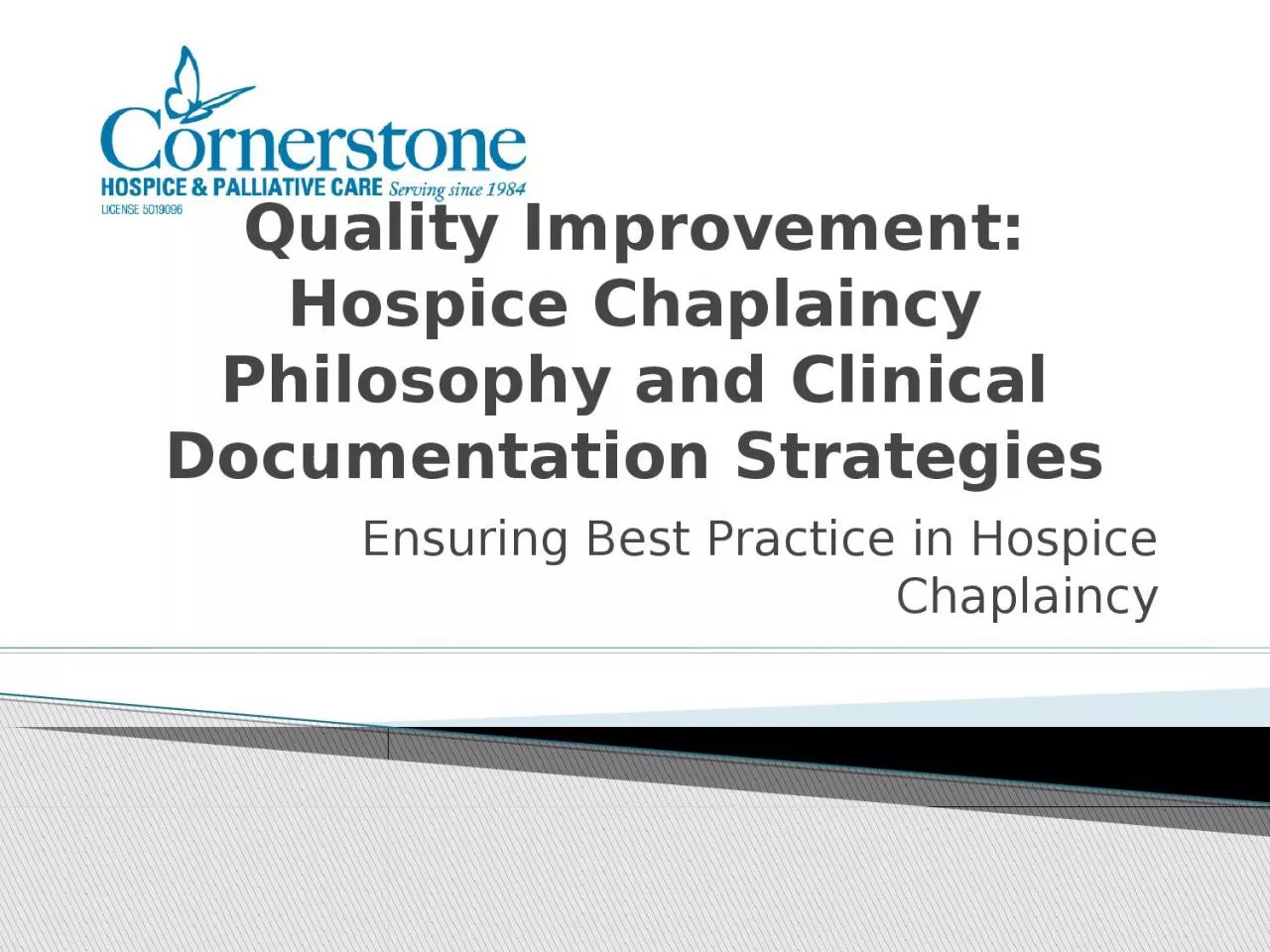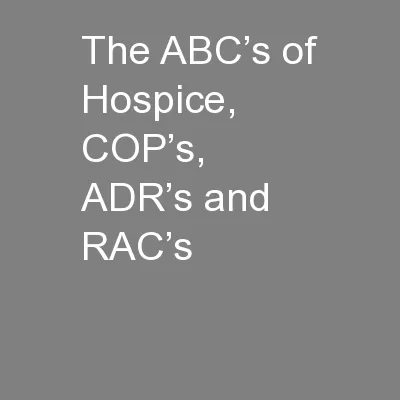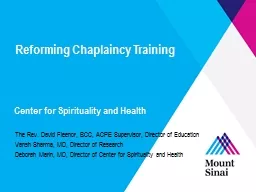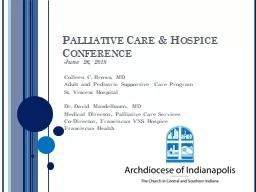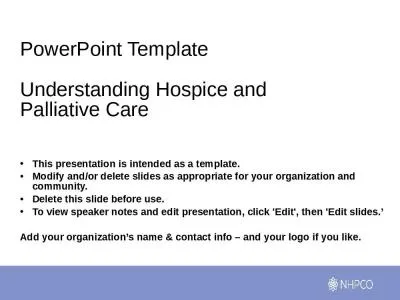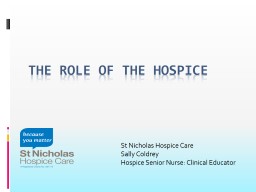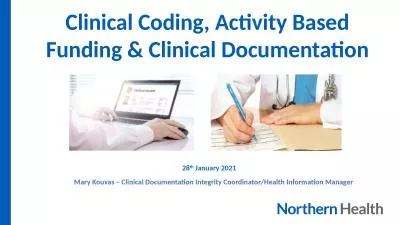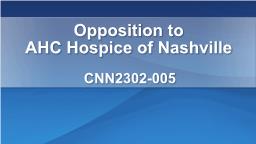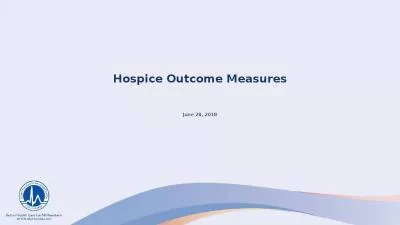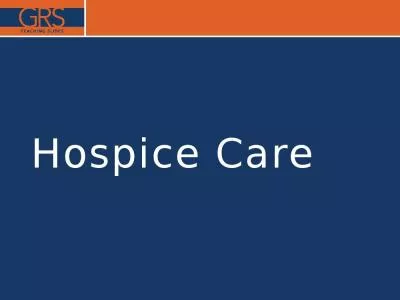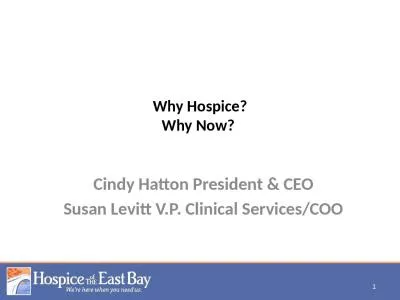PPT-Quality Improvement: Hospice Chaplaincy Philosophy and Clinical Documentation Strategies
Author : clara | Published Date : 2024-01-29
Ensuring Best Practice in Hospice Chaplaincy Introduction Toward Excellence in Spiritual Care How it all started Recognition of the problem CMS FY 2011 Top Ten Hospice
Presentation Embed Code
Download Presentation
Download Presentation The PPT/PDF document "Quality Improvement: Hospice Chaplaincy ..." is the property of its rightful owner. Permission is granted to download and print the materials on this website for personal, non-commercial use only, and to display it on your personal computer provided you do not modify the materials and that you retain all copyright notices contained in the materials. By downloading content from our website, you accept the terms of this agreement.
Quality Improvement: Hospice Chaplaincy Philosophy and Clinical Documentation Strategies: Transcript
Download Rules Of Document
"Quality Improvement: Hospice Chaplaincy Philosophy and Clinical Documentation Strategies"The content belongs to its owner. You may download and print it for personal use, without modification, and keep all copyright notices. By downloading, you agree to these terms.
Related Documents

